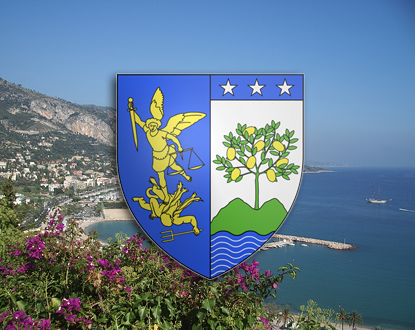Thanks to the exceptional donation from Séverin Wunderman, and three years after the laying of the foundation stone, the Jean Cocteau Museum – Séverin Wunderman Collection, a major cultural project supported by the city of Menton, will open its doors on Sunday, November 6.
This museum is also the first and largest public resource in the world for Jean Cocteau’s work.
In September 2005, the Ministry of Culture and Communication approved the inclusion of the Séverin Wunderman collection in the inventory of the Jean Cocteau Museum, which has held the “Musée de France” label since 2003.
JEAN COCTEAU AND MENTON
During the summer of 1955, while staying with his friend Francine Weissweiller in Saint-Jean Cap-Ferrat, Jean Cocteau discovered Menton and experienced a true “falling in love” with the town. From that point on, he regularly spent time there. In 1956, at the request of the mayor at the time, Jean Cocteau undertook the decoration of the Marriage Hall at the Town Hall, a project completed in 1958, and was named an honorary citizen of Menton.
One of his walks led him to discover the Bastion, an abandoned 17th-century small fort embedded in the harbor’s jetty, which he transformed into a small museum adorned with in situ works. The Bastion Museum opened its doors in 1966, three years after his death, and it still houses today some of the Mediterranean works of the poet dating from the period of 1950 to 1963.
A donation of 1800 works
The donation by Séverin Wunderman includes 1800 works, of which 990 are by Jean Cocteau.
It offers a very comprehensive view of Jean Cocteau’s work: all periods are represented, from the first self-portraits of the 1910s to the “Mediterranean” period at the end of his life, which is little known to the general public.
The museum will showcase paintings, drawings, ceramics, tapestries, jewelry, photographs, sound documents, film excerpts, as well as 450 works by great masters of modern art from Jean Cocteau’s circle: Picasso, Modigliani, De Chirico, Miró, Foujita… and an exceptional collection of 360 works related to Sarah Bernhardt, who was Jean Cocteau’s first “sacred monster.”
In addition to the masterpieces showcasing the multiple facets of Jean Cocteau’s genius, the collection will also reveal the man through numerous portraits and testimonies from his artist friends.
A museography along the life of Jean Cocteau
A chronological and thematic visitor route, revolving around graphic arts and performing arts, will recount, in 7 sequences, the major stages and encounters in the life and work of Jean Cocteau:
1. The Theatre of the Bedroom (1899-1911)
2. The Molt (1912-1919)
3. The Spirit of Contradiction (1920-1923)
4. Jean the Birdcatcher (1924-1929)
5. The Blood of a Poet (1930-1937)
6. Mysteries (1937-1948)
7. Testaments (1949-1963)
Each year, a renewed display composed of 150 to 200 works will provide insight into Cocteau’s multifaceted genius and the density of his work.
–The architecture
Facing the shoreline of the city of Menton and perfectly integrated into the site, the building designed by Rudy Ricciotti will house, over 2700 m², all the works derived from the Séverin Wunderman donation.
Inspired by the multiple facets of Jean Cocteau’s genius, who described his work as an “object difficult to grasp,” the architecture of the museum is intended to be multifaceted, fragmented, sometimes elusive like the building’s exterior façade.
In addition to the permanent collections, the museum will include spaces that will host temporary exhibitions dedicated to contemporary drawing, a bookstore shop, and a café.
It will become a new vibrant space in the heart of the city of Menton.


